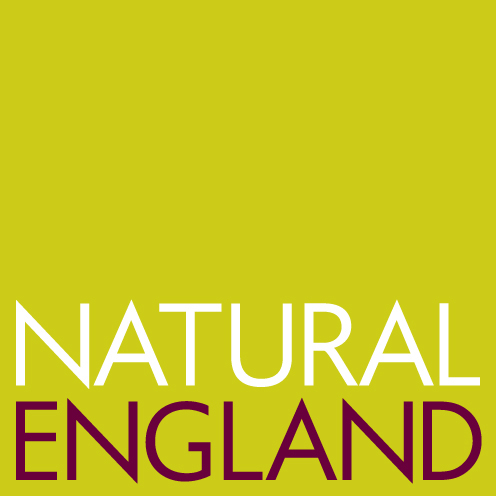Betty's Fen
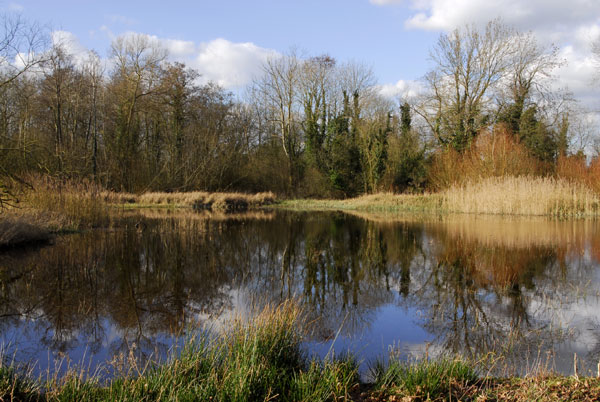
Betty's Fen © A. Rivett
Betty's Fen forms the western third of Blo'Norton Fen SSSI and Natura 2000 site. Unlike the remainder of the fen, which belongs to the village Poors' Trust, the 2.2ha of Betty's Fen was in private ownership until 2003 when it became the first piece of land to be purchased by the LOHP. We called it Betty's Fen after its last owner, Mrs Betty Williams, who sold it to us in the hope that it would be enjoyed by future generations of Blo'Norton villagers. When we acquired it, the fen was derelict, most of it having dried and out and reverted to woodland of sallow, crack willow and sycamore. The only remaining open fen was a poor-quality reedbed beneath which the peat was rotting and enriched by agricultural run-off. The drier fen edge, adjacent to the road, was also very enriched and dominated by a bank of tall stinging nettles. But, despite this loss of much of its former species richness, the fen retained a real feeling of wilderness and had enormous potential for restoration.
Conservation

Fenland plants with shading scrub
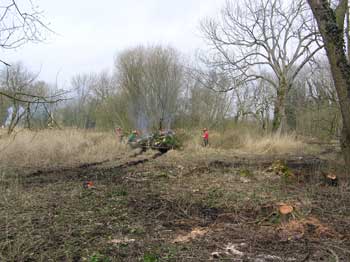
Clearance of recent scrub
Sensitive management was urgently needed to start to restore some of the internationally important wildlife that had been lost from this site whilst at the same time retaining its feeling of wilderness. We planned to re-create an area of open, wet fen in the centre of the site whilst retaining the more mature fringing woodland. The first stage in this restoration was completed in spring 2005, with the clearance of scrub from the centre of the fen. clearance of recent scrubLater that year, a thin layer of degraded surface peat was removed from this area to create a shallow but extensive turf pond: on other similarly degraded fens, this management has resulted in the re-appearance of many of the high quality, international features for which these fens were originally designated. In the past, higher water tables and the continual excavation of new turf ponds by peat digging for fuel, perpetuated suitable conditions for these features. Surrounding the scrape, the removal of scrub is allowing regeneration of formerly very rich transitional areas on the fen margins. These areas are maintained by rotational mowing.

Excavation of the new wet fen
The roadside edge of the fen is being improved by planting with willow and alder. This will eventually be coppiced to create a graded woodland edge, attractive to birds and invertebrates, as well as to the public. The shade from this dense planting should eventually reduce the stinging nettle growth.
Special features
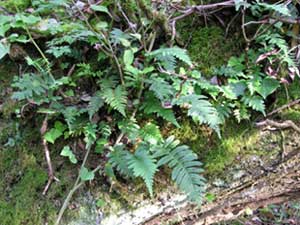
Polypody Polyium vulgare
Fallen trees! Many of the old crack willows in the fen have split at the base and fallen. Most are still alive, with new, upright growth arising from the old horizontal trunks. These old trunks are home to a wide range of mosses, liverworts, fungi and invertebrates. Although a very important resource for wildlife, fallen trees are usually 'tidied-up' and are rarely left undisturbed. Betty's Fen is the only one of the Waveney/Little Ouse Headwaters Fens where evergreen, Polypody ferns, can be found growing on mossy, fallen trunks. Although recent scrub has been cleared to allow open fen to develop in the centre of the fen, these old trees around the fen margins remain a valuable feature of the site.
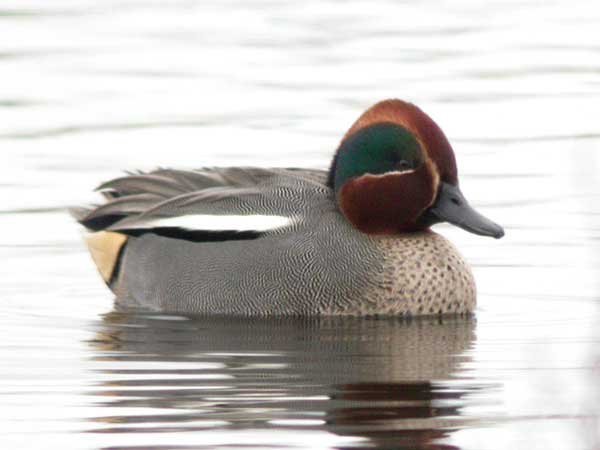
Male teal © R.Hayes
Teal: These small ducks frequent the new, wet fen at Bettys Fen. They feed and breed around the margins of shallow lakes and ponds, often amongst woodland. The UK breeding population is Amber Listed because it has declined by over 25% in the last 20-30 years, probably as a result of habitat loss and degradation.
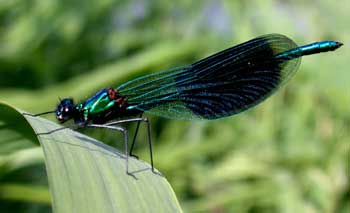
Male banded demoiselle © A.Chick
Banded demoiselle (Calopteryx splendens): This fabulous damselfly can be seen along the river and flitting over the wet fen on warm days from mid-May to late September. The males are metallic blue-green and with an iridescent blue-black wing patch: the females are metallic green and lack a wing patch.
A list of all species recorded from this site can be viewed here.
Access
Before the LOHP acquired Betty's Fen, there was no public access. Our management has created limited, permissive access to this secluded site for the first time. Spoil from digging the turf pond has been used to create a raised path through the fringing woodland and across the fen to the river. Here, a new riverside walk links with the existing walks on the main part of Blo'Norton Fen. Visitors are asked to stay on the paths to reduce disturbance to the wildlife and for their own safety on this wetland site. The surface of the raised track across the fen has been re-enforced with a ridgid pastic mesh to make it more suitable for wheelchair users. As on our other sites, visitors with dogs are asked to keep them under close control to avoid disturbing the wildlife, and to ensure they do not foul the footpath. Please note also that cycling and horse riding are not be permitted because of the damage they cause to the soft peat footpaths.
